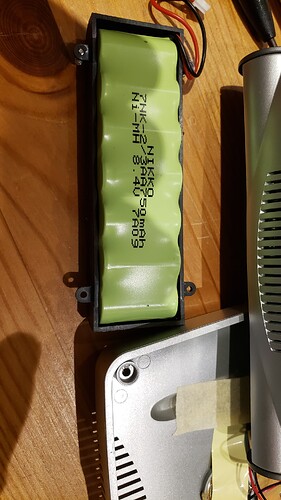Hi,
I have a SAD LED light panel that is used for seasonal depression, that I bought ten or fifteen years ago. My daughter would like to try it, so I found it and it works, but it won’t hold a charge.
I opened it up and found the batteries. They are 2/3AA size and there are seven in series, each one is 1.2 V and 750 mAH. Each one reads over 1.2 volts except for one, which has no voltage.
I was going to replace just that one, but I don’t know what type of battery it is and when
I took off the plastic wrap that held all 7 of them together, there was no information at all on the individual batteries.
The label on the plastic wrapping said:
NIKKO
7NK-2/3AA750mAh
8.4V 8G07
If I knew what type of batteries they are, I could buy one to replace the bad cell.
The charger plugs into the wall, and it says “input: 100-240V 50/60Hz 0.4A Output:9.0V 1.1A”
So I have many questions. Is there a way to tell what type of batteries these are so I can replace the one bad battery?
Or, could I buy a new NiMH battery pack like this:
Is the charger meant to work with a specific type of rechargeable battery? I’ve read that you can’t use a NiCd charger on NiMH batteries. Do I need to stick with the original type of battery to drive the LED light panel?
I would be grateful for any advice on how to proceed. Thank you very much.

